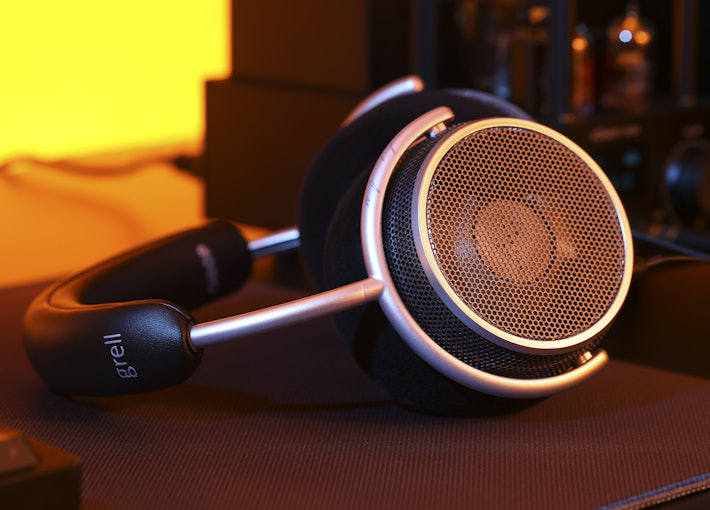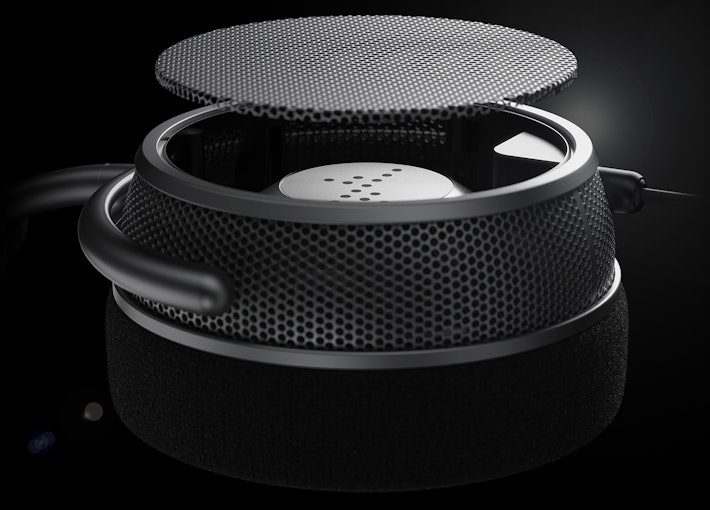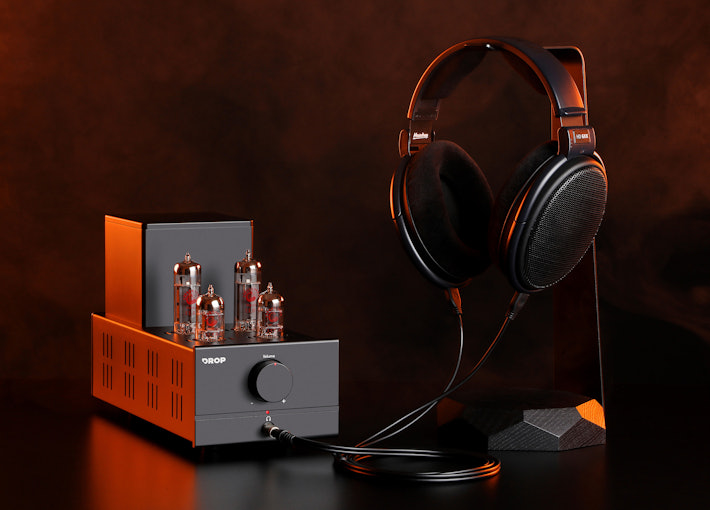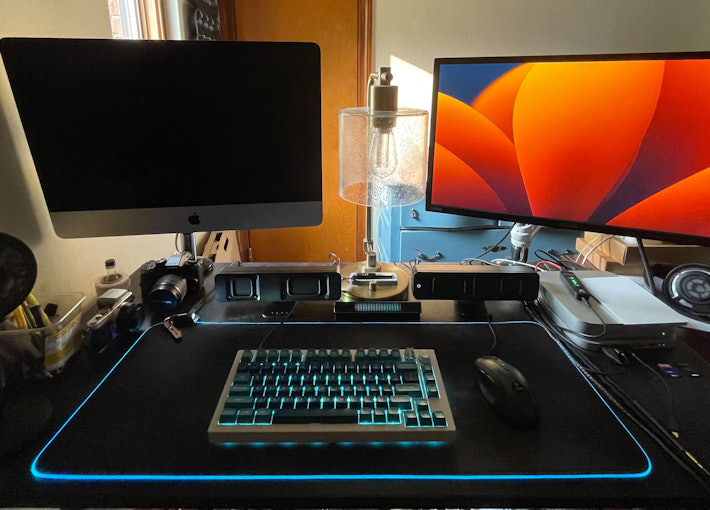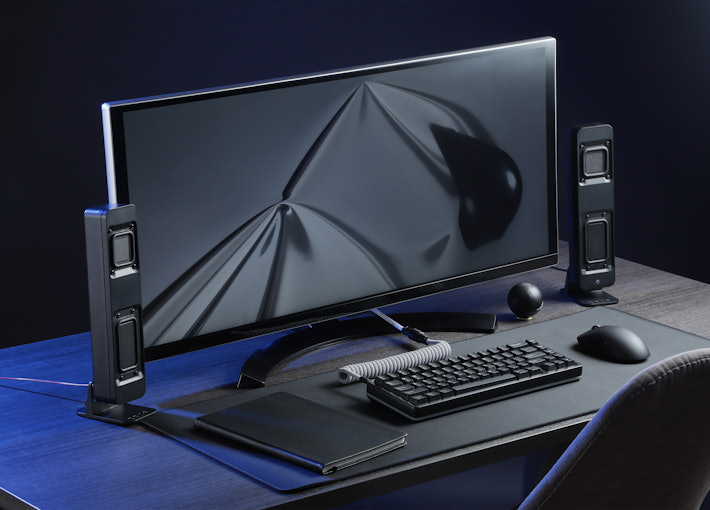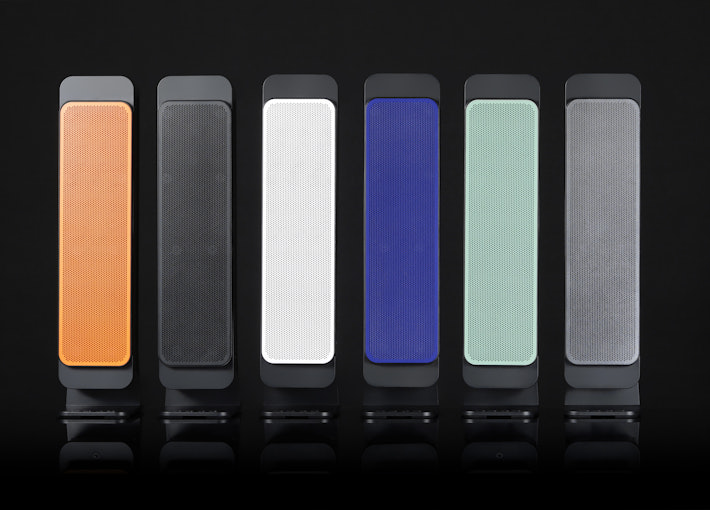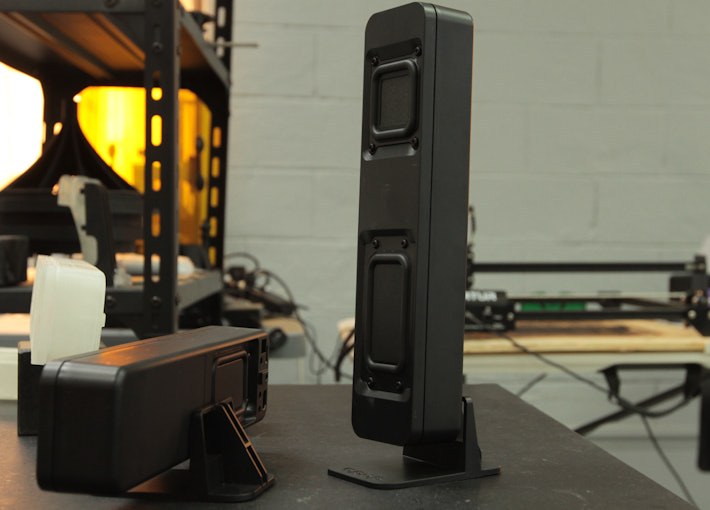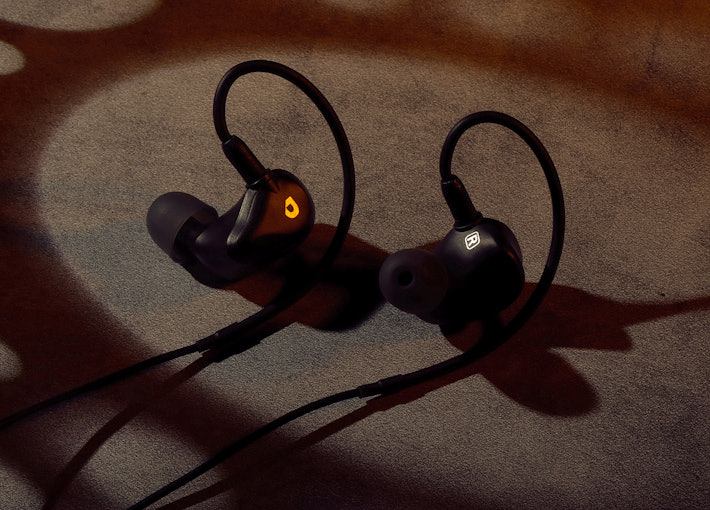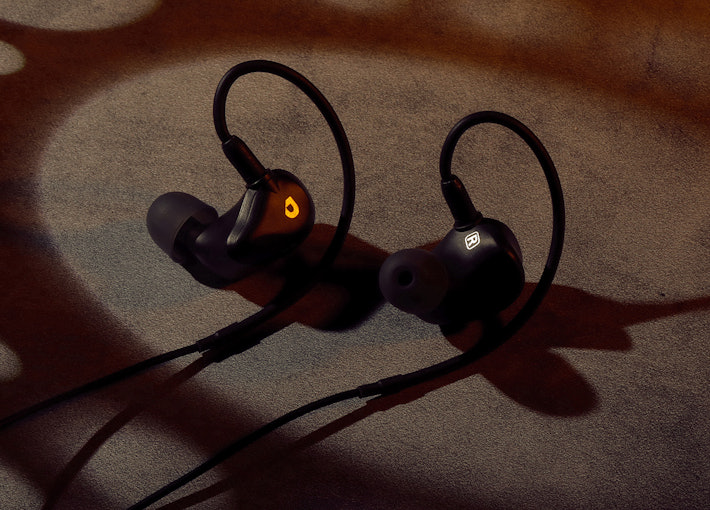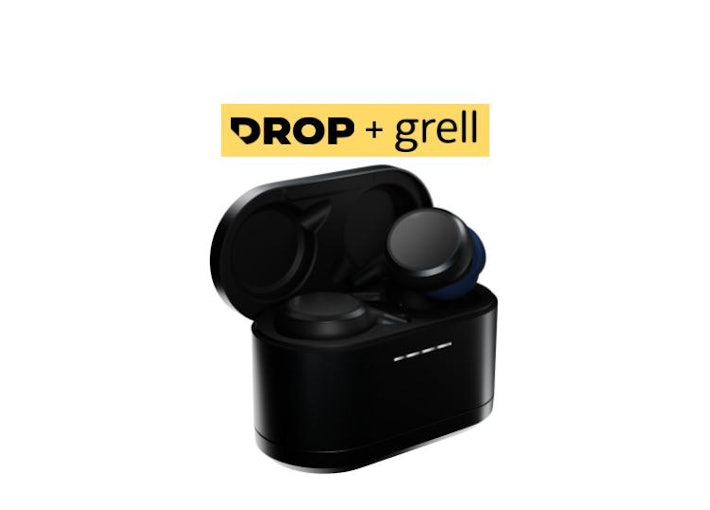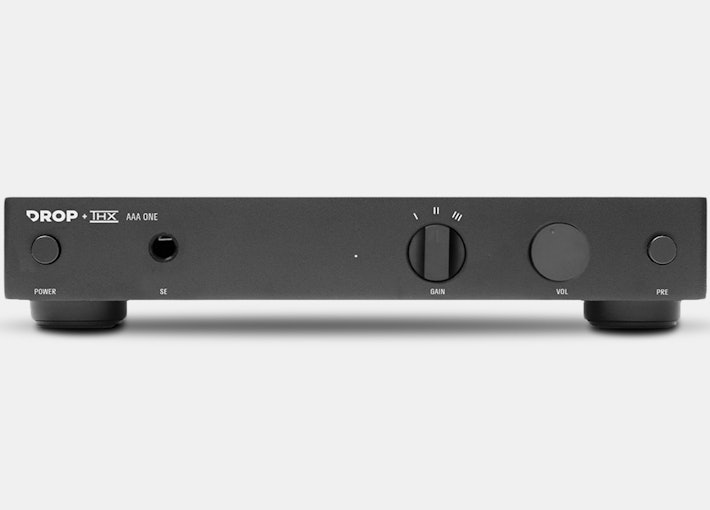Click to view our Accessibility Statement or contact us with accessibility-related questions





















Audiophile

Drop+Audiophile
3472
Nov 7, 2024
DROP + GRELL OAE1
Launched earlier this year in a limited-edition run, the OAE1 Signature is our first pair of over-ear headphones made by the legendary Axel Grell.
Now, we’re bringing the OAE to a broader audience—with a few small but important changes. The most noticeable change is the subdued black finish. Complementing that finish, there are now large Left and Right indicators on the dust covers inside the earcups to help with orientation and placement. Beyond the aesthetics, the clamping force of the headband has been reduced from 3.5 N to 3 N (Newton Meters) for a slightly more relaxed fit. Finally, the OAE1 will include a single sided 6.3 mm TRS cable with an indicator stripe to help reduce cable insertion errors. Most important, however, is what’s staying the same: the sound. The tuning is identical with the original OAE1 signature.
The Drop + Grell OAE1 Headphones launch on November 13th, 2024. The initial quantity will be limited as we work to ramp up production.
Hit "Request" to be...

Drop+Audiophile
3472
Oct 11, 2024
Our first collab with Campfire Audio
We’re beyond excited to announce our first collaboration with the boutique IEM brand Campfire Audio. It’s a partnership several years in the making—and now, the Drop + Campfire Audio IEMs are just weeks away from launch.
This collaboration has been several years in the making. Drop/Massdrop has worked with a number of IEM companies over the years bringing a variety of IEM collaborations to our Audiophile community. Campfire Audio has been in the IEM game for many years now, often setting high marks for their flashy designs and great sounding line of IEMs. Although both teams had been interested in working together for a long time it was only recently that the stars aligned to where we were able to make something happen.
The idea for our first product came from Campfire Audio founder Ken Ball, who proposed taking the brand’s limited-run Black Star IEM and revamping it with their never-before-seen bio-film membrane bass driver into a newly tuned, competitively priced IEM...

Drop+Audiophile
3472
May 7, 2024
A Look Inside the Drop + Grell OAE1 signature
Our latest collaboration with Axel Grell, the Drop + Grell OAE1 signature headphones, will be launching on Thursday, May 9th!
As one final reveal in advance of the big launch, we wanted to highlight a recent interview between Axel Grell and Head-Fi where Axel dives into the science and design behind the OAE1 headphones.
If you haven't followed the Drop + Grell OAE1 story thus far, enjoy the journey from Story 1 - How the Drop + Grell Headphones Were Conceived.
What are you most excited for in the OAE1?

Drop+Audiophile
3472
Apr 3, 2024
The Most Open Open-Back?
To minimize unwanted artifacts in the listening experience, it was important that the OAE1 signature headphones avoid reflecting any secondary sound waves back toward the ear. Much like sound waves bouncing off walls when speakers are played in an empty room, the echoes from the reflections off the headphone body can cause interference, leading to dips—and even worse, peaks—degrading the quality of sound and imaging.
Findings of the Institute für Kommunikationstechnik (IKT, Institute of Communications Technology) of the Leibniz University Hannover (Dr. Roman Schlieper, Prof. Dr. Jürgen Peissig et al.) shows that there is a greater impact of the closed area and the acoustical impedance of the headphone to our hearing than just the influence on the measurable frequency response.
(grell® and IKT have partnered to undertake ongoing research into acoustics.)
So, according to what is known today, the acoustic impedance of the headphones measured from the ear should be as...

Drop+Audiophile
3472
Mar 7, 2024
The Driver Geometry of the Grell headphones
Everyone perceives sound differently. Your ear is not like a measuring microphone. Because of this, it’s important to understand how sound is perceived and what factors influence that perception. In creating the OAE1 signature with Axel Grell, we studied how sound is perceived and what factors influence that perception.
This premise drove the unique geometry and driver placement for the OAE1 Signature headphones. Since our ears, with all their unique characteristics, act as a natural equalizer to all that we hear, it makes sense that headphones should do more to use the structure of the pinna to guide soundwaves into the ear canal. To achieve this effect, the transducers are placed much further forward and angled back towards the ear. By positioning the transducer further out and away it enables the soundwaves to fully encompass the pinna (the external part of the ear), allowing for an increase in spectral information and a more natural sound field for the listener. By...

Drop+Audiophile
3472
Sep 29, 2023
How the Drop + Grell headphones were conceived
At the time work began on the upcoming Drop + Grell headphones, Drop and Axel Grell were showing off their first collaboration – the wireless TWS1X – at the New York CanJam show. Behind the scenes Axel had been working on his next concept to develop and the discussion evolved into Drop asking Axel to create a version exclusively for its Audiophile members. Axel himself was, of course, already well known among this crowd for the sound of the highly popular wired headphones he developed while working at Sennheiser. So, the pursuit began to create the ideal-performing Axel Grell wired headphone with the most open-back design possible.
The headphone was to originally share many of the same parts as his starting concept, such as the headband and most of the earcups. As development progressed it was decided that rather than design a headphone which could lead to two models it was better to optimize the design for one to maximize its performance. This led to a complete redesign...

Drop+Audiophile
3472
Sep 14, 2023
Introducing Drop + Xduoo OTL Tube Headphone Amp
We’re excited to announce our first collaboration with xDuoo—and our first-ever OTL tube amplifier. Building on xDuoo’s extensive product line and solid reputation in the amplifier space, we worked closely with their engineers to create a brand new tube amplifier designed to pair with high-impedance headphones like our ever-popular HD6XX and HD58X. It’s the Drop + xDuoo OTL Tube DAC/Amp—and it’s totally tubular.
From the earliest designs, we intended the amp to pair with high impedance headphones of 120 ohms up to 600 ohms. For this reason—among sonic preferences—we chose an Output Transformerless (OTL) topology for the amp, since it pairs so well with high impedance loads. Many fans of OTL amps such as the Darkvoice 336 and Bottlehead Crack are well aware of the magical attributes these amps can have when paired with a suitable set of cans.
The tube configuration uses a total of 4 tubes (2 per channel). For the preamp tubes, we chose the ECC 82 (equivalent to the...

Drop+Audiophile
3472
Jun 15, 2023
First Impressions
What does the BMR1 sound like?
I was just as curious as everyone who has submitted one of the thousands of orders so far, so I volunteered to introduce the BMR1 tuning (and share a few good testing songs!), I’m looking forward to seeing reviews from professionals and the community. Leave a comment if there’s a pro reviewer you want to see cover these, or if you have your own songs for testing.
I have just an engineering validation sample, but the drivers’ performance is locked in, and so far, they are punching above their weight. Unusual for small desktop speakers or Bluetooth speakers, the most defining trait is that the BMR1 sounds like they are bigger than the physical dimensions suggest. When sitting at my desk in front of the BMR1 by 2-3 feet, the speakers do a good job of creating a soundstage that seems unbound by the exact position of the drivers and size of the enclosure (probably due to that Balanced Mode Radiator design without large waveguides). Even when I...

HoffmanMyster
3234
Apr 26, 2023
New Feature—Product Tagging in Photos (+ Giveaway! - Audio Rigs Edition)
Ahoy, audiophiles! Hot on the heels of the launch event for the mech keys community, we are kicking off the Audiophile Rigs product tagging launch event (with a bonus giveaway for those who participate!).
Check out all the Rigs submissions thus far! Audiophile Rigs
What’s this about a giveaway?
More details can be found at the end! The short version: we will be giving away $100 Drop Rewards credit to one lucky winner (randomly selected) from all participating users who contribute and tag their Audiophile photos using the "Rigs" flair! In order to be eligible for giveaway prizes, your photo must include at least two tagged items (not required to be Drop products—see Tagging Non-Drop Products below). Post must be made in the first two weeks (by 2023-05-10 11:59PM PT) in order to be entered.
What is Product Tagging in Photos?
Product tagging allows you to tag any products in a Photo post—both those found on Drop currently, as well as write-ins that will be manually approved and...

Evshrug
4130
Feb 23, 2023
Audiophile 101: What is an Audiophile?
Image credit @Evshrug
In my time browsing various headphone and audio forums, I’ve observed again and again a somewhat amusing contradiction. If you go to a sound science forum and ask “What is an audiophile,” they will tell you an audiophile makes purchases based on emotion and nostalgia, with little regard for research, price to performance, and specs which would allow a system to be EQ’d into any sound (including the “ideal” sound). Meanwhile, there’s an opposite camp that will happily buy anything just because it makes them feel good, because “that’s the point of music,” meanwhile they would define an “Audiophile” as someone who pays more attention to gear, specs, and listens to tone sweeps more than music. Conundrum! Paradox!
I’ll do you better: ‘WHY’ Audiophile?
The truth is the word “Audiophile” comes from two roots: Audio* is easy enough to understand, while -phile comes from the Greek root “philos,” which carries a meaning that doesn’t directly translate to...

Drop+Audiophile
3472
Jan 29, 2023
The BMR1: Sounding Off On The Details
Why a 3.5-Millimeter Input?
This tried-and-true input is still valid today. While it may seem old-fashioned, the 3.5-millimeter input (also known as the stereo mini jack) scores high on both versatility and sound quality. It allows for a wider variety of connections of both modern and vintage sources of music. The majority of computers and laptops still have a 3.5-millimeter analog output, which can send a high quality signal straight into the BMR1. This analog input also allows the speakers to be connected with other sources that use an analog output—such as turntables, CD players, and tape decks—with the use of a preamplifier needed to attenuate the signal. To this day, the 3.5-millimeter jack remains both incredibly scalable and versatile, despite its seemingly old-school design.
A Word on Power
Despite their diminutive size, the BMR1 speakers play loud. In order to get a soundstage that really envelopes the listener, we’ve made sure that BMR1’s amplifier has enough...

Drop+Audiophile
3472
Jan 25, 2023
Grill Us—& We’ll Grille You
As mentioned in the first story, one detail that makes the BMR1 Nearfield Monitors unique is their removable, customizable grilles. By default, the BMR1s don’t actually come with any grilles. This is because:
1. While the grilles are designed to minimize the audible impact, audiophiles know grilles will inherently add some coloration.
2. We wanted listeners to only pay for what they need and make the speakers part of their workspace; and plenty appreciate the bare, industrial look of the exposed BMR1s. But sometimes, you want a cleaner aesthetic—one you can customize. That’s where the grilles come in.
Made of coated steel with an ABS frame, each grille attaches to the BMR1 with a satisfying magnetic click and a sleek form factor. Lightweight yet durable, they provide added protection for the drivers and surfaces of the speakers. But their main function? Personalization. We are working on a number of grille concepts and planning to include the...

Drop+Audiophile
3472
Jan 17, 2023
What Are BMR Drivers?
Earning a spot in the name of our BMR1 Desktop Speakers, BMR Drivers are the driving force behind the sound—and size—of these cutting-edge workspace staples. So, what are BMR Drivers? Let’s start with the technical explanation, from a white paper by their manufacturer: Tectonic Audio.
Ever since the first drive unit design (patented by Rice and Kellogg in 1925), loudspeaker drive units have been steadily evolving with improved materials, refined motor design, and modern manufacturing techniques. However, many of the component parts of a modern day loudspeaker are still very similar to those used in the original 1920s prototype.
Of all these components, it could be argued that the most critical is the diaphragm, as it provides the interface between the induced mechanical vibrations and the resulting acoustic pressure waves that we hear.
Balanced Mode Radiator (BMR) technology provides a novel approach to diaphragm design that addresses two significant limitations of conventional...

Drop+Audiophile
3472
Jan 7, 2023
Entering the Desktop Speaker Category
In the world of speakers, there is one category which is more or less overlooked by audiophile speaker manufacturers. That is the desktop speaker category—and, more specifically, its affordable segment. As we looked at this category, we wanted to design speakers that satisfy our true Audiophile community but also borrowed some inspiration for customization from our Mech Keys community.
We saw a gap in the current market, which looks something like this:
- Affordable Desktop Speakers
- Tiny satellite speakers with a subwoofer. You get all that bass but not much else.
- Bose Companion Speakers. These practically dominate the space and are the speakers to beat. They’ve been around for years and years.
- Benefits: Small size, easy for any workspace to accommodate (unless you use a 2.1 set with a subwoofer).
- Drawbacks: Limitations in audio performance due to smaller driver sizes. Generally limited connectivity and not suitable for other audio use. No customizability.
-...

Drop+Audiophile
3472
Oct 22, 2022
Introducing the Drop + EPOS H3X
Building on our success with the Drop + EPOS PC38X, we decided to develop a closed-back, entry-level headset to broaden our offering. Doing our due diligence in the current market, we found that most headsets under $100 focus on virtual surround sound, which often distorts soundstage and frequency response. Many of these headsets also suffer from poor audio quality overall—especially for anything other than games—as well as subpar microphone performance. When we started development on our under-$100 headset, we knew we had to find the right partner to provide a listening experience similar to the PC38X, which works great for gaming, and a wide range of other listening uses.
With the PC38X as our benchmark, it was almost inevitable that we’d return for another collaboration with EPOS—and that’s exactly what we did. EPOS had recently introduced its entry-level H3 Wired Headset to the market, and we decided it would make the ideal foundation for our newest headset: the H3X.
...

Drop+Audiophile
3472
Jul 28, 2022
Shaping the ERX: An EVO Form Factor
For Etymotic, the goal of the EVO shell (and now, the ERX shell) was for a more fluid design with living elements based in nature. The in-concha shape lends itself to the typical Etymotic deep insertion design, while allowing for a lower profile when worn. This helps in situations when worn on stage, or under a helmet, for example. Additionally, routing the cable over the ear helps reduce cable microphonics. The shell itself is injection molded stainless steel and is incredibly robust. It has a pleasant heft to it that can be felt when held in one’s hand, yet all but disappears when worn in the ear.
Tuning the ERX: A Blended ER4XR and EVO Sound
The sonic signature of the ERX is inspired by the ER4XR, but its execution is an amalgamation of the ERX and the EVO. Tonally, it leans towards accuracy, with a slight emphasis at lower frequencies that add just enough weight to the lower frequencies, without encroaching on the upper bass/lower midrange. Vocals are...

Drop+Audiophile
3472
Jul 20, 2022
Drop + Etymotic: Teaming up to Create Exceptional Earphones
We’re collaborating with legendary IEM manufacturer Etymotic to bring the community something special. The ERX: a high-performing pair of earphones that blends the best of two iconic models. But before we get to the earphones, we need the history—about Etymotic and its signature IEMs.
In the Ear Canal, From the ‘90s to Now
Etymotic is widely known for its ER Series of IEMs, which came out in the early 90’s. Since then, the company has continued to produce the same product line with minor changes over the years. One unique aspect of Etymotic’s products is that they are designed to sit in the ear canal. This creates an excellent seal and with accurate sound; however, it can be a less secure fit than most in-concha designs with ear hooks.
A Legacy of Hi-Fi Firsts
Etymotic was founded in 1983 with an emphasis on auditory research and engineering-driven product design. Shortly thereafter, in 1984, Etymotic invented the first insert earphones for audiological research (The...

Drop+Audiophile
3472
Aug 20, 2021
Drop + Grell TWS1X First Look
We’re Teaming Up With Audio Legend Axel Grell
You read that right! Drop will soon be partnering with the venerable Axel Grell, known for his work developing many of Sennheiser’s most notable headphones.
Since leaving Sennheiser in 2018, Axel has started his own audio brand. Having worked with Axel in the past, we know how dedicated he is to creating excellent audiophile sound. For our next combined effort, we’ll be focusing on an audiophile-worthy True Wireless IEM, built from the ground up.
At the core of the product is a custom-designed 10mm dynamic driver able to deliver a detailed-yet-punchy sound. Also critical to the product is its adaptive, active-noise-cancellation circuitry. While most ANC headphones are good at attenuating high frequencies, we worked to develop a system that filters out even more of the surrounding environment—and does so without compromising the quality of the audio signal.
Be on the lookout for the TWS IEM in the coming weeks, and let us...

Drop+Audiophile
3472
Aug 20, 2021
Meet Axel Grell
Axel Grell - Audiophile Innovator & World Leading Headphone Legend
Axel Grell: An Audiophile Innovator
For over three decades, Axel Grell has crafted headphones designed to produce world-class sound—at times, with little-to-no regard for price consideration. Pairing high-quality components with cutting-edge product designs, Axel Grell created some of Sennheiser’s most sought-after headphones. Throughout his mission to enhance the clarity and transparency in the product lines he produced, Grell garnered a devoted following among members of the audiophile community for his close attention to detail throughout all parts of the manufacturing process. By the 1990s, his unwavering quest to design the most neutral headphones possible catapulted him to legendary status amongst those obsessed with high-end audio.
A New Brand Breaks Ground With a True-Wireless IEM
Continuing to push boundaries in the audiophile space, Axel Grell has founded a new brand—grell—with a launch product...

Drop+Audiophile
3472
Apr 21, 2020
Introducing Drop + THX AAA ONE Linear Amplifier
With the success of the AAA™ 789 Linear Amplifier (and now the Panda Wireless Headphones), our partnership with THX is only getting stronger. Now, we’re excited to announce our latest collaboration: the Drop + THX AAA™ ONE Linear Amplifier.
The ONE will be the new entry point for ultra-clean, linear sound in a desktop headphone amplifier. Just like the 789, it’s designed to optimize your audio experience. While the 789 provides more power with its balanced design, the ONE will still drive most headphones with ease. It’s also built with an all-metal enclosure to protect the technology inside. Now we’re including a pre-amplifier output that allows you to connect the amp to a powered speaker and switch back and forth between headphones and speakers on the fly.
Here are some other highlights:
Ultra-low distortion AAA™ circuit with high-voltage swing
Ultra-low noise THX architecture (less than 1 uV of output noise)
Power to drive demanding headphones with ease (Up to 2000...





